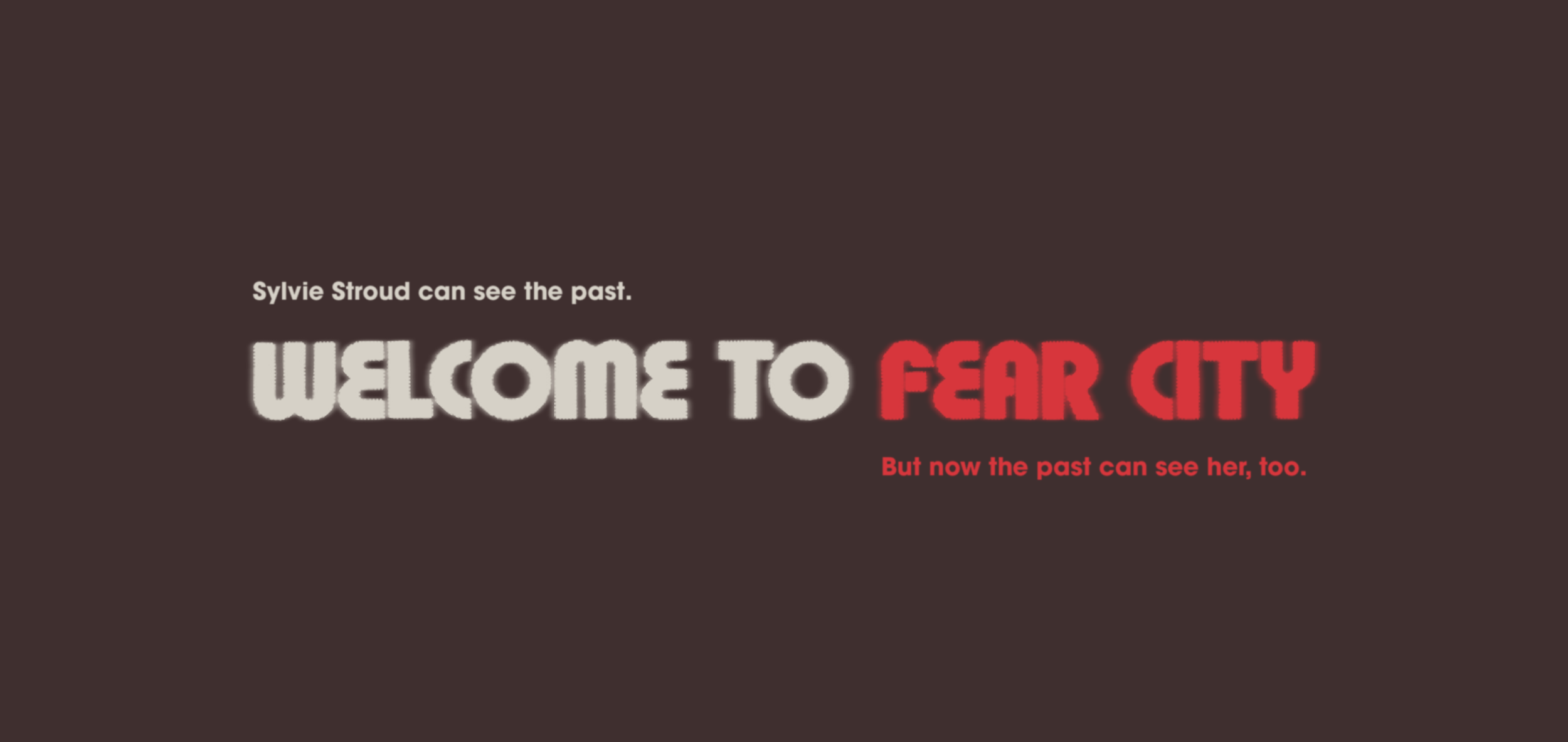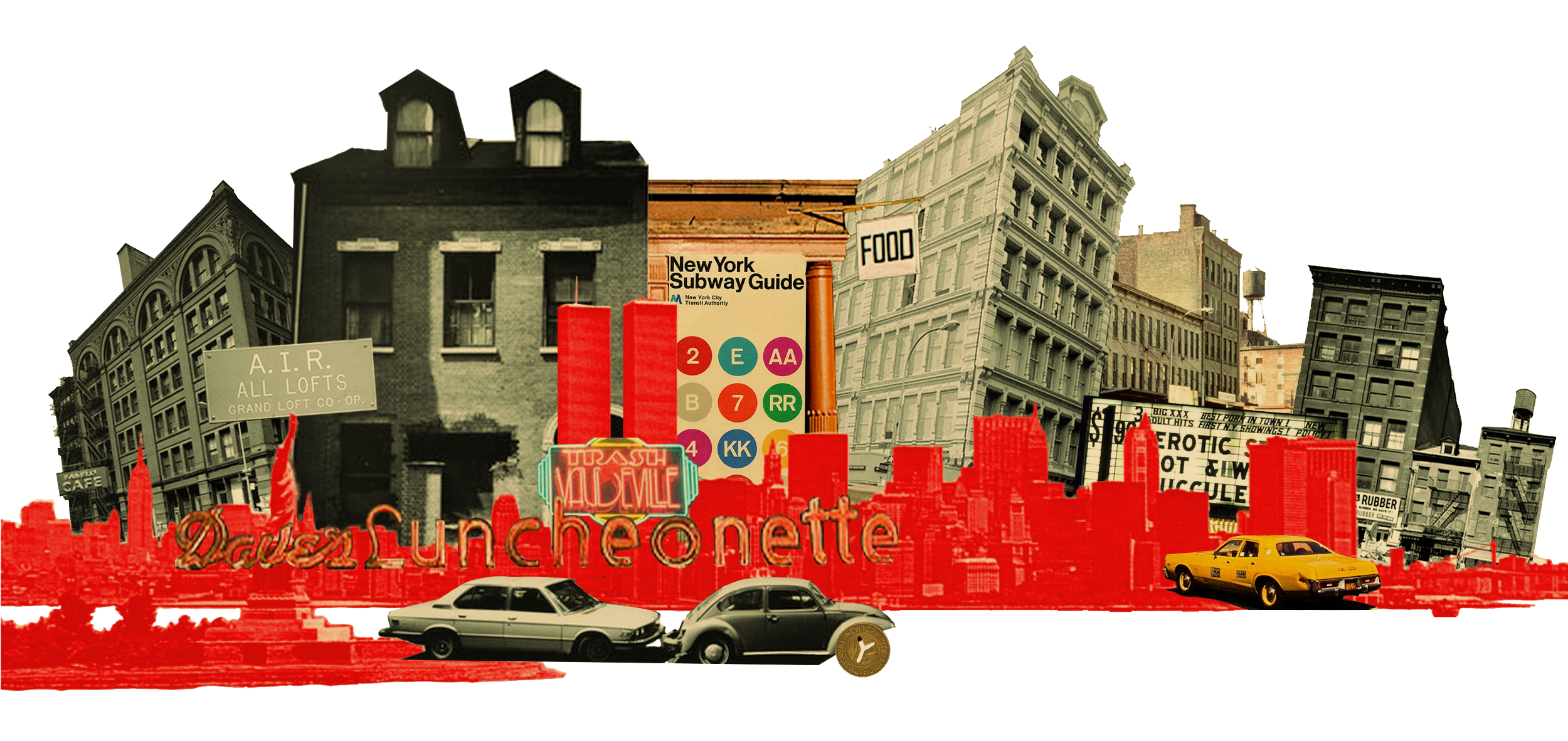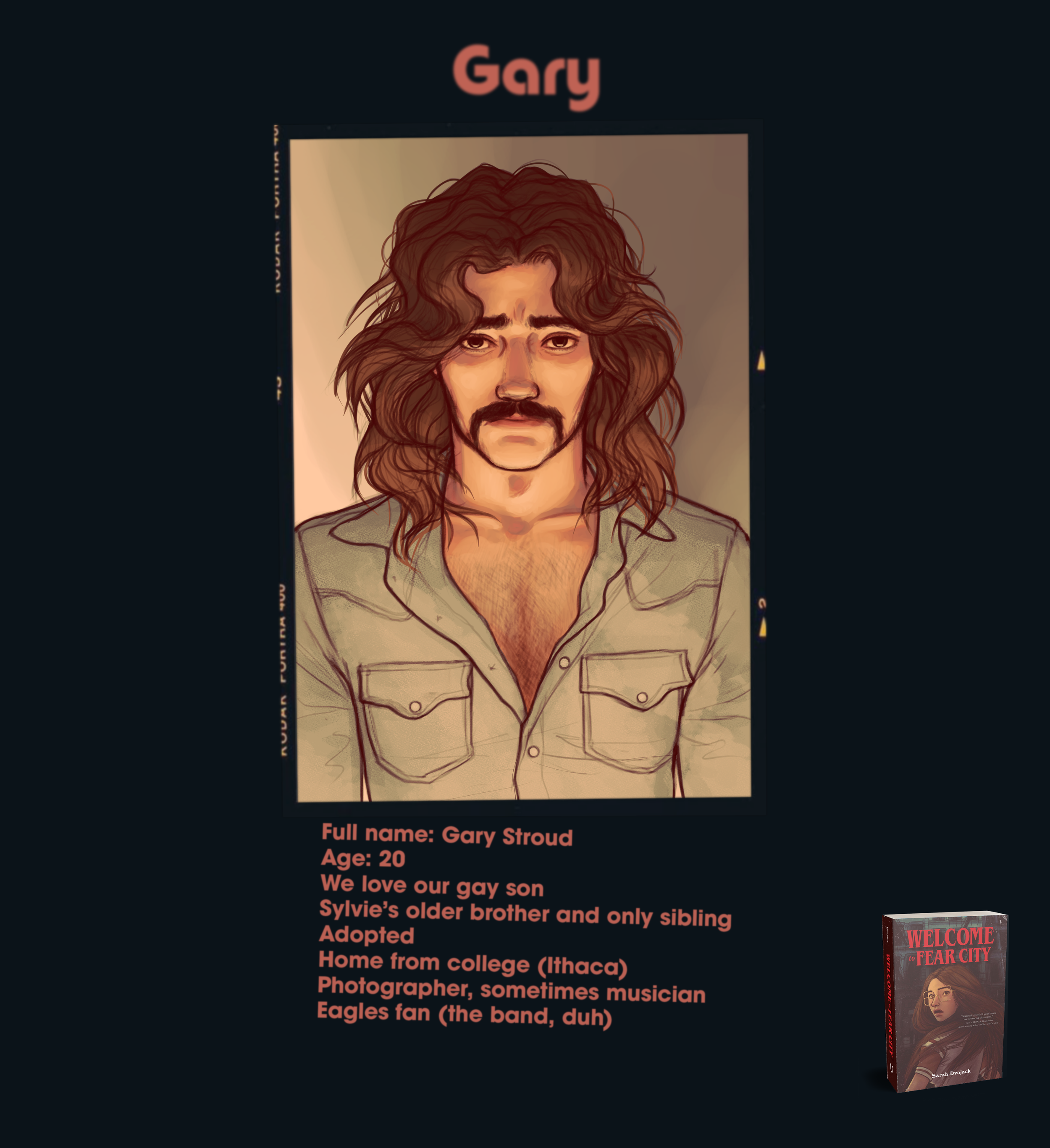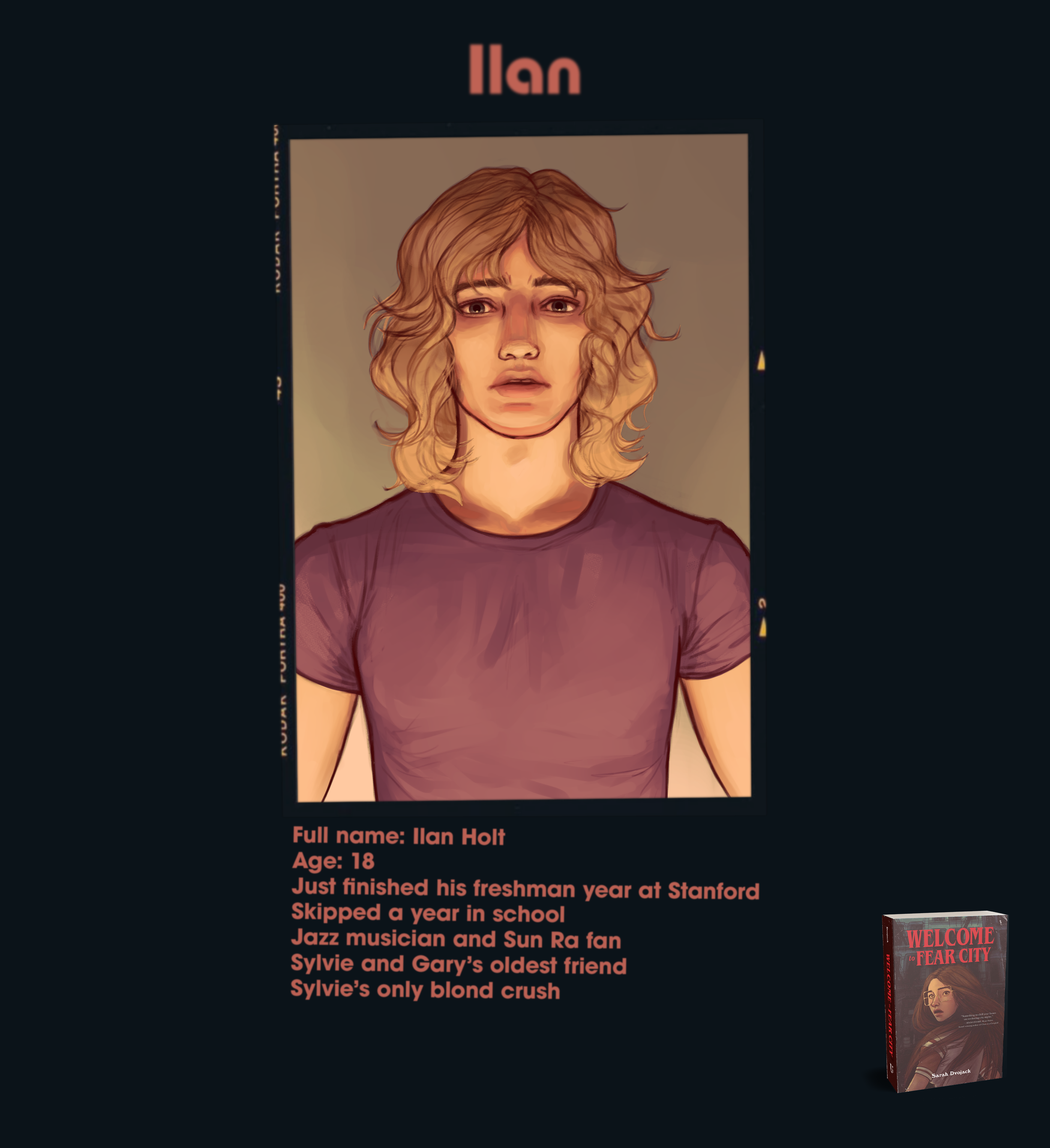
PURCHASE LINKS:
Or request it from your local bookstore or library.
NEW YORK CITY,
SUMMER OF ‘77.
In a city on the edge and obsessed with a serial killer, Sylvie Stroud is dealing with an entirely different kind of evil when she awakens a dark magic hellbent on consuming her.
Seventeen-year-old Sylvie Stroud can see the past of any building just by touching it. Her powers have always been reliable, until one day she sees the memory of a teenage girl’s murder without touching anything at all. There's a lot of violence in New York City, especially in 1977, but this is different. When the vision keeps repeating, Sylvie begins to investigate. But doing so accidentally awakens an old, parasitic magic lurking just beneath the surface of her beleaguered city. Now all it wants is Sylvie, and it will go through everyone Sylvie loves to have her.
Featuring fully illustrated chapters.
praise for welcome to fear city
“WELCOME TO FEAR CITY has every flavor of horror I love: supernatural mystery, violent histories, and creepy spectral dog-things. But it’s also a story about friendship and growing up, enhanced by its period setting, late-70s New York brought to vivid, tactile life. You can almost smell the garbage and hear the echo of CBGB. Dvojack brings the goods. Something to chill your bones on sweltering city nights.”
— aDAM cESARE
Bram Stoker Award-Winning author of INFLUENCER and CLOWN IN A CORNFIELD
“Vivid, immersive and thrilling... Dvojack skillfully offers a vibrant glimpse into New York City’s past, crafted with care, detail and populated with a host of compelling characters. Sylvie’s psychometric powers showcase a sweeping breadth of city history; well-researched truths that help ground the truly harrowing speculative elements of a pulse-pounding story.”
— Leanna Renee Hieber
Award-winning, bestselling author of A Haunted History of Invisible Women.”
“This great tale immerses readers in a New York of days past, filled with rich history and culture. Readers are dropped into a city filled with life and action, as well as the sense that something sinister lurks around every corner, driving home the "Fear City" of the title. YA horror readers will delight in a supernatural mystery so full of twists, turns, and all kinds of tension.”
— booklist
“The ghosts of 1970's summer in NYC are brought to terrifying life in Sarah Dvojack's smashing debut, Welcome to Fear City, a velvety tale that's part Scooby Mystery, part Pan's Labyrinth, and all mesmerising entertainment! Readers will be swept up in Sylvie's story of murder and monsters in vintage Big Apple...and checking for black dogs behind them.”
— Ellie Marney
New York Times bestselling author of None Shall Sleep
Characters
Playlists
Vibe check.
In-Character Playlists
(What they were actually listening to.)

Sylvie’s New York
New York City in 1977 was in turmoil. Not because of supernatural parasites from Dutch colonizers, but because of a myriad of man-made issues that all clashed at once. The summer would come to be known as the Summer of Sam, named for serial killer David Berkowitz, known only to Sylvie and her friends as the .45 caliber killer until he was caught.
One of Berkowitz’s confessions involved blaming his neighbor’s dog, Sam. He claimed the dog sent him messages.
New York’s budget was in the red in the years before and after FEAR CITY. The banks held a metaphorical gun to the mayor’s head to get social programs chopped down to nothing or the city wouldn’t be bailed out. In 1975, President Ford said he wouldn’t help, giving us the famous headline FORD TO CITY: DROP DEAD. Free college? Free daycare? Free clinics? Decimated. Libraries were shuttered and their hours reduced (sound familiar?). Waste workers went on strike, leaving garbage to pile up in the heat. Landlords torched their buildings to collect insurance, leaving entire neighborhoods looking like wastelands. Times Square, now a Disneyfied glow-in-the-dark tourist destination, was a no-man’s land for most people. Old theatres were neglected, sandwiched between adult shows and adult novelties. The night court was prime entertainment. Broadway chugged along, still creating incredible art, but the family friendly era (partially ushered in by CATS) was years away.
When the blackout hit in July of 1977, for many people it was the last straw. They already had to put up with complete indifference about violence, cost of living, and neighborhood blight, and now there was no power on one of the hottest days in one of the hottest weeks of the year. Broadway in Bushwick suffered the worst damage, with many businesses broken into and burned into husks. Meanwhile, in Manhattan, especially in the nicer neighborhoods, people gathered at their local watering hole to have what remained of the drinks before they got too warm. It was a party atmosphere in some places, and chaos in others. Some people reveled in the rebellion and others tried to maintain order.
What caused the blackout? Multiple lightning strikes outside the city, and poorly manned and maintained substations.
As for Sylvie’s SoHo, it was still a barely legal place to live. For a number of years, Robert Moses and the city hoped to build a new expressway through the area. Technically, no one was supposed to be living there. The era of houses was over a century earlier; those residents had moved uptown. For decades, the only thing in SoHo (or what would become SoHo) were factories.
Full time residents in 1977 had to be working artists (Artists in Residence, or A.I.R.). While this is technically still the case, the rules are not enforced. Today, there are many wealthy families living in the area full or part time, with all the comforts of modern society. In 1977, there were only a handful of families with children and no street lights at night. Many buildings still had manual elevators and unreliable plumbing and electricity. They were also often filled with rats, as there were no stray cats like other neighborhoods (this is still true, at least the cats part). SoHo was smashed between places like the Meatpacking District and the former Gasoline Alley, where everything was a little roughshod.
Taxis often couldn’t find their destinations, as the streets were less known. You’d get off on Houston or Broadway to spare your driver the annoyance. The work days started before dawn and were still filled with what remained of the manufacturing businesses. It was a hard, mercantile, working class neighborhood, with a weft of artists trying to take roost in the empty spaces. And there were a lot of empty spaces back then. Entire buildings and entire floors. Fire hazards due to becoming storage for factory scraps. The sidewalks were not maintained, and street parking was limited during the work week.
Even so, there were an abundance of tourists from outside the city and uptown who made a point of visiting SoHo. Unique businesses and restaurants, more similar to what you might find decades later, began to appear. There were fears about the whole place becoming too trendy one day, driving out the artists, especially once the rest of the manufacturing businesses were driven out. Those fears were eventually realized, though not until Sylvie had grown up.
When people speak fearfully of New York, of dark, graffiti-filled subway cars, of violence in unlit corners, they’re speaking of Sylvie’s era. At least, part of Sylvie’s era. Because New York was vibrant with subcultures and small businesses and traditions that have, unfortunately, fractured as time has gone on. It would be impossible for Sylvie to live her life today. Her parents would not be able to afford the rent in SoHo, let alone owning two floors. There may no longer be an arson problem in the outer boroughs, but that doesn’t mean people haven’t been driven from their homes by greedy landlords and a government that cares only for the rich.
Still, though, what makes New York City wonderful is what the people do there in spite of every obstacle.
Irish Dance
Then and Now
Back in 2001, when I was a beginner Irish dancer, I created a website all about Irish dance. It still exists, and you can find it here.
On that website, you will find a fairly-but-not-ever-completely exhaustive Irish Dance Dictionary. I’ve updated it off and on throughout the last two decades, but it will provide the two main things you’re probably wanting to know: how to say feis and how to say oireachtas, and what the hell they even mean.
The dictionary is a pretty long list of stuff, so I’ve pulled the entries out for you:
Feis (pronounced "fesh"; pl. feiseanna "FESH-ah-nah"): An Irish dance competition. Translates to “festival.” The feis is the main avenue dancers use to advance levels. Feiseanna are held year-round, though more often in spring/summer, and are typically hosted by a local dance school. Historically, a feis included céilí (group) and solo step dancing, food, crafts, music, livestock, or language competitions. Some feiseanna still have art, baking, or music competitions, but these are not the focus. The plural is not feises, and it's time we break that bad habit. Gaeilge is its own language and does not pluralize the same as English!!!
Oireachtas (pronounced “oh-ROCK-tus,” through there are different dialects; pl. oireachtais): Sometimes referred to as "O-Rock" or Regionals. This is a regional competition and world/national qualifier. Only the top level solo dancers and teams are sent. Historically, before regions were established in the 1970s, the national competition was the main oireachtas. In North America, it was around 1974 that the first regional competitions began to take place, not long after Ireland's regions were defined.
Of course, it’s important to remember that Irish dance in 1977 was pretty different to Irish dance today, not only in style, but in how it was run.
As Sylvie mentions, the World Championships (Oireachtas Rince na Cruinne) was first staged in 1970, and the first transatlantic dancer (basically the first non-Irish or UK dancer) to win only did so in 1975.
(And who was that teenage boy from Chicago Sylvie mentions in passing? Michael Flatley, Mr. Lord of the Dance himself, who would go on to shape Irish dance as we know it.)
Competitive Irish dance was undergoing seismic shifts in the 1970s, notably with the creation of regional councils/organizations within individual countries, as well as the first regional oireachtais. Until the mid-1970s, the oireachtas for Sylvie was also the national competition, and, lucky for her, it was usually hosted within easy driving distance for her family (well, if they had a car).
Today, North America is divided into the following regions (some of these were not yet established in 1977): Western US, Southern US (including Mexico), Mid-America US , Mid-Atlantic US, New England US, Western Canada, and Eastern Canada. (Sylvie competed in the Mid-Atlantic Region, for those who are curious.)
Regionals became one way that transatlantic schools could generate more world qualifiers and (hopefully) placements. Because during Sylvie’s era there was a lot of debate over the extent of Irish and UK bias from adjudicators at the world level. There was such spotty success for solo dancers and teams from abroad that a separate award just for transatlantic dancers was introduced.
In addition to this stumbling block, the amount of steps and the speed of the music was not standardized in 1977. The dancer was at the mercy of the adjudicators and musicians. That would strike the fear of God into any modern dancer, let me tell you. Today, everything about the execution of the dance is regulated, and no dancer is surprised with a weird speed or an extra step.to share with the world. Whatever it is, the way you tell your story online can make all the difference.
Glossary
Coming Soon
Resources
A selection of media that went into writing Welcome to Fear City.
living in the house of death
Spindrift: Spray from a Psychic Sea by Jan Bryant Bartell
SoHo history
SoHo, New York City in the 70s
The Karamzoffs. A Walk in the SoHo Years
SoHo Stories with Jaime Davidovich
SOHO STORIES series by Paul Tschinkel
SoHo Memory Project, founded by Yukie Ohta
SoHo: A Guide by Helene Zucker Seeman and Alanna Siegfried
SoHo: The Rise and Fall of an Artists' Colony by Richard Kostelanetz
SoHo in the Seventies: New York's Lost Bohemia by Lynne Pamela Kanter
New York History
NY77: The Coolest Year in Hell (2007)
American Experience: Blackout (2015)
The Bronx is Burning: 1977, Baseball, Politics, and the Battle for the Soul of a City by Jonathan Mahler
Fear City: New York's Fiscal Crisis and the Rise of Austerity Politics by Kim Phillips-Fein
Love Goes to Buildings on Fire: Five Years in New York that Changed Music Forever by Will Hermes
New York: Paradise Lost by Meryl Meisler
The Island at the Center of the World by Russell Shorto
Wrestling with Moses by Anthony Flint
Triangle: The Fire that Changed America by David Von Drehle
Greenwich Village: A Photographic Guide by Edmund T. Delany, Charles Lockwood, and George Roos
The Street Book: An Encyclopedia of Manhattan's Street Names and Their Origins by Henry Moscow
movies
Taking of Pelham One Two Three (1974)
Dog Day Afternoon (1975)
Taxi Driver (1976)
The Little Girl Who Lives Down the Lane (1976)
Freaky Friday (1976)
Summer of Sam (1999)









